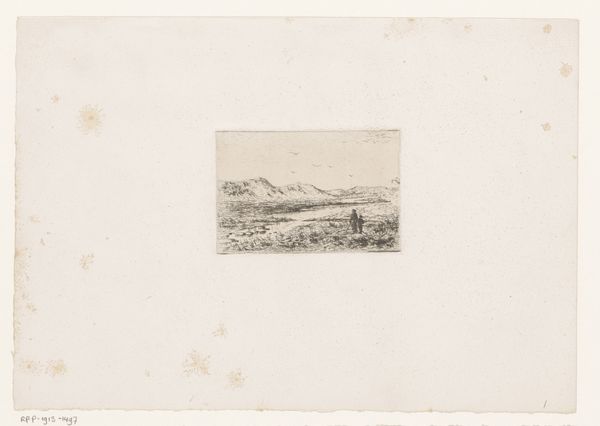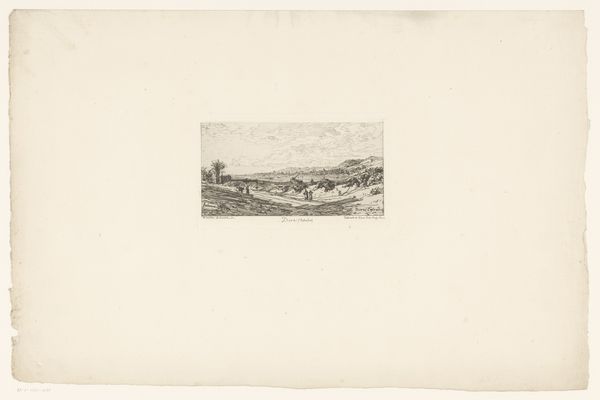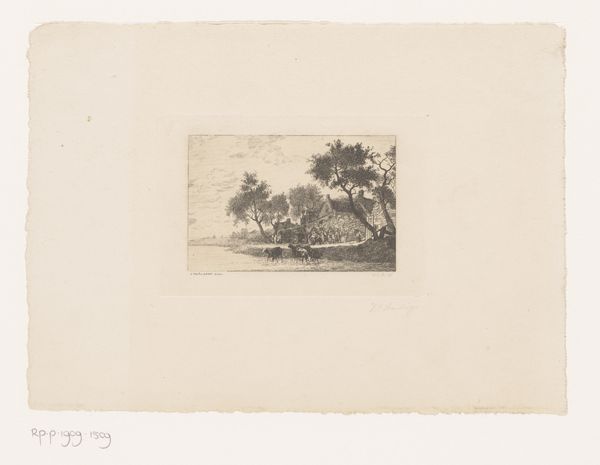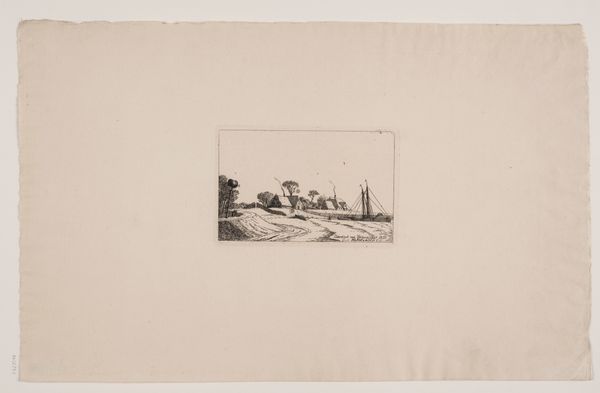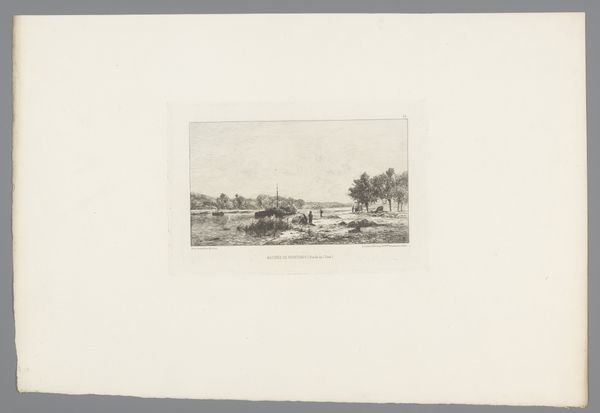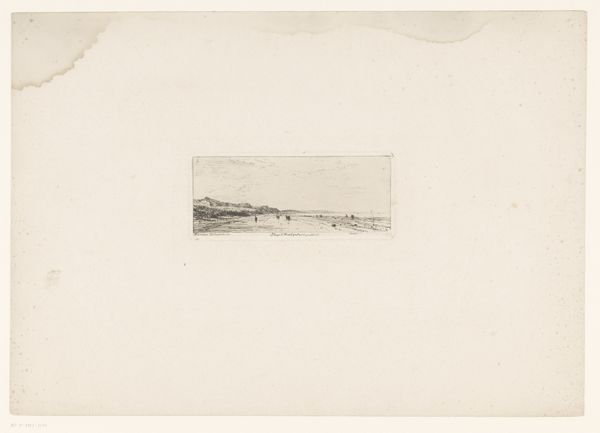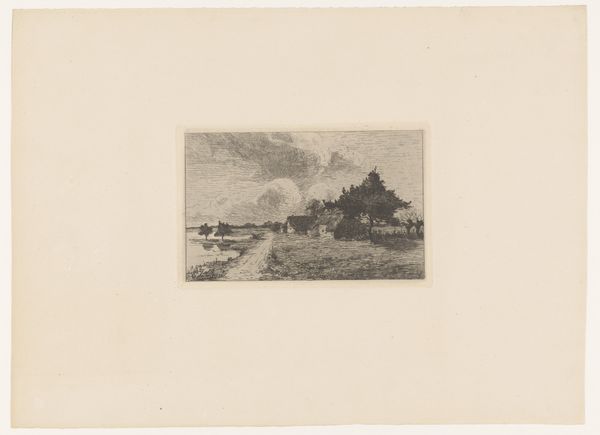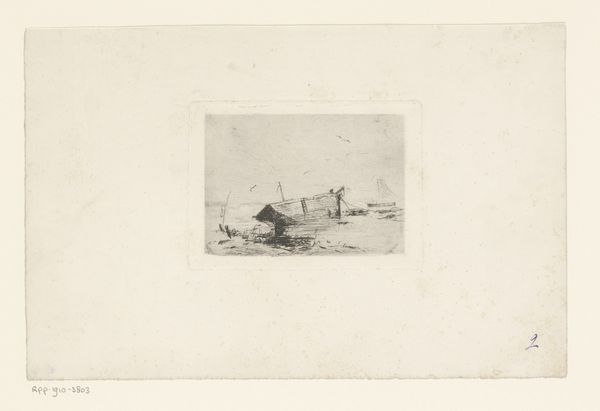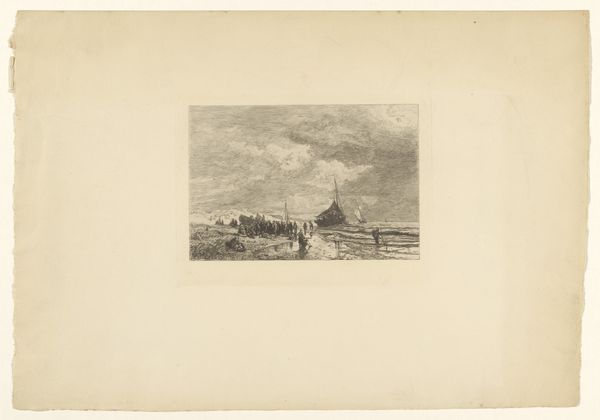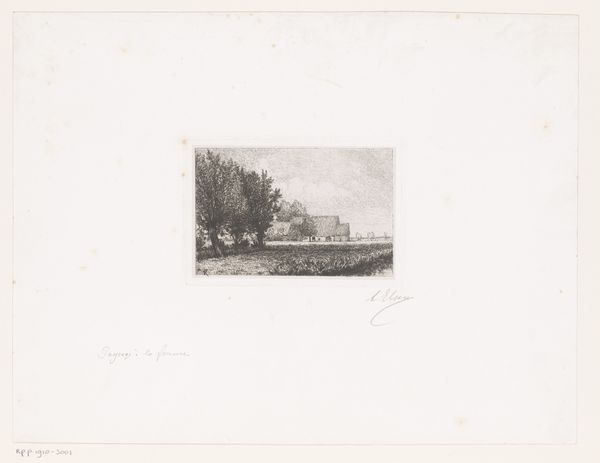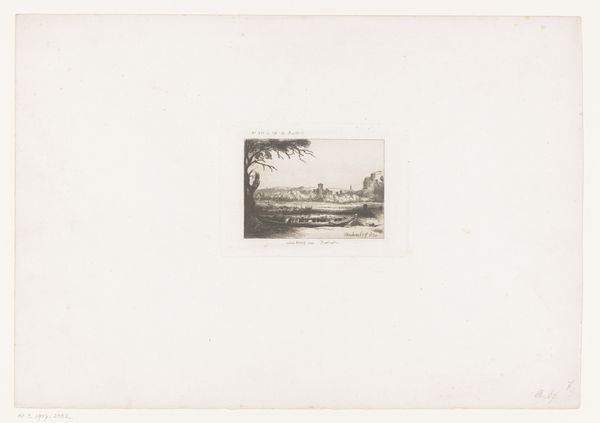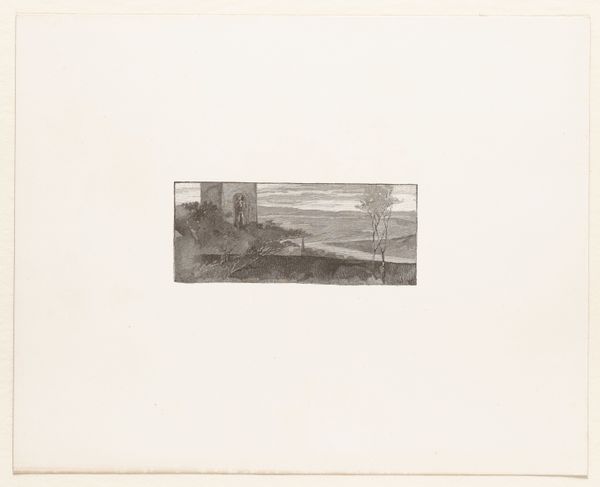
print, etching
# print
#
etching
#
landscape
#
cityscape
#
realism
Dimensions: height 80 mm, width 140 mm
Copyright: Rijks Museum: Open Domain
Editor: Here we have Theodoor Hannon's etching, "Landschap met brug en een huis" – that's "Landscape with Bridge and a House" – created sometime between 1861 and 1910. The detail is remarkable given the size. It’s…nostalgic, almost. What do you see in this piece? Curator: This piece whispers of the 19th century’s rapid industrialisation and the social upheavals it brought. It portrays an untouched scene—a yearning for simpler times, a rural idyll juxtaposed against the growing urban realities. The bridge can be interpreted as more than just a physical structure, but a threshold between different ways of life, different social stratifications. What might Hannon be implying about who crosses this bridge, and from what to what? Editor: That’s a really interesting point. I hadn’t thought about the bridge as symbolic, but now that you mention it, I see the possibility for commentary on class and access. It almost looks like there aren't people on the bridge; are there supposed to be figures here? Curator: Or their absence perhaps is equally telling, no? Think about who typically populates landscape art. This isn’t a celebration of grand estates, of aristocratic leisure. It depicts a simple structure in a relatively humble landscape. To me it represents that burgeoning awareness among artists of the era about their social role, their artistic responsibility. Are we presenting idealized realities or true experiences? Editor: I see what you mean. So Hannon, by focusing on this 'everyday' scene, engages in a form of social commentary. Curator: Precisely. It implicitly critiques the societal shifts by elevating the ordinary, forcing us to consider who benefits and who is marginalized in progress’s name. It speaks to anxieties surrounding progress, about which voices are heard and valued. Editor: It’s made me rethink how I view even the quietest landscapes, that is. They aren’t always as innocent as they appear. Curator: And perhaps that is art’s enduring power - to show the everyday isn't always as straightforward as it appears.
Comments
No comments
Be the first to comment and join the conversation on the ultimate creative platform.
